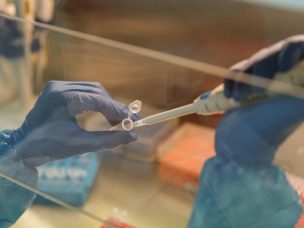Biological mechanisms associated with prostate cancer risk and obesity form the basis for the development of prevention and treatment strategies for prostate cancer.
Prostate cancer is the second most common cause of cancer-related death in the United States male population. Obesity has a prevalence of 36.6% in the adult male population in the US. Obesity and associated metabolic alterations contribute to the risk of cancer. Molecular mechanisms that link prostate cancer and obesity comprise insulin-like growth factor-1 (IGF-1) and steroid hormone signaling pathways. This study, published in the journal Endocrine-Related Cancer, is a follow-up study of the Prostate Cancer Prevention Trial (PCPT). The study evaluated the association of the body mass index (BMI) with IGFs, IGF binding proteins (IGFPBs), and serum sex steroid hormone.
This case-control study obtained data and specimens from the PCPT, which investigated finasteride for prostate cancer prevention. The investigators utilized prostate biopsy to detect the presence or absence of prostate cancer. The serum samples of the participants were assayed for IGF-1 axis analytes and concentrations of sex steroid hormone.
The study findings demonstrated an inverse relationship between BMI with SHBG, serum testosterone, and free testosterone. In contrast, a positive and linear association of BMI with serum estradiol, 3α-dG, and estrone. There was no association between BMI and androstenedione. BMI had a significant positive association with serum IGF2 and a significant inverse association with IGFBP2. There was no association between BMI, IGF1, and IGFBP3. The study found significant associations between BMI and serum steroids or IGFs/IGFBPs. Increased concentrations of IGFBP2 were associated with a significant increase in the serum concentrations of SHBG, testosterone, and free testosterone. Testosterone and 3α-dG were significantly associated with IGF2, IGFBP2, IGFBP3, while free testosterone was significantly associated with increasing concentrations of IGF1 and IGFBP2. There was no significant association between IGFs and androstenedione.
The study also evaluated the association between prostate cancer risk and obesity, modified by IGFs/IGFPBs, and sex steroid hormones. The authors observed that the levels of serum steroids did not influence the association between prostate cancer risk and obesity, whereas IGFs and OGFBP2 induce modifications of the relation between obesity and risk for low- and high-grade cancer. Only the IGF-1 axis is involved in the obesity-related risk of prostate cancer.
In summary, this study highlights the importance of understanding the biological mechanisms that link obesity and prostate cancer in developing treatment and prevention strategies for prostate cancer.
Reference
Chau, C. H., Till, C., Price, D. K., Goodman, P. J., Neuhouser, M. L., Pollak, M. N., Thompson, I. M., & Figg, W. D. (2022). Serum markers, obesity and prostate cancer risk: results from the prostate cancer prevention trial. Endocrine-Related Cancer, 29(2), 99-109. https://doi.org/10.1530/erc-21-0107










